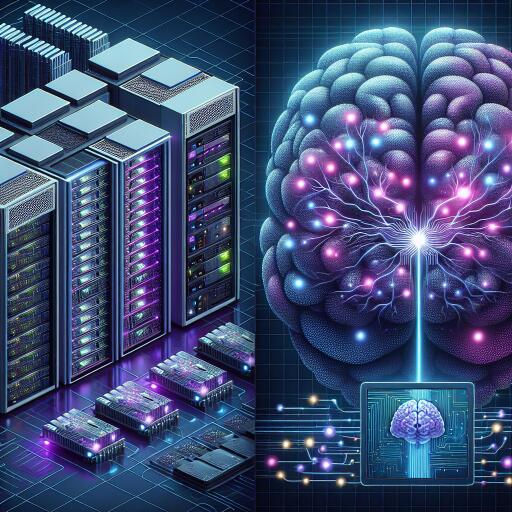Hewlett Packard Enterprise to Power AIST’s Cutting-Edge Generative AI Supercomputer with NVIDIA Technology
In a significant leap towards revolutionizing artificial intelligence (AI) capabilities, Hewitt Packard Enterprise (HPE) has unveiled its plans to construct a state-of-the-art supercomputer for the National Institute of Advanced Industrial Science and Technology (AIST) in Japan. This forthcoming powerhouse, dubbed ABCI 3.0 (AI Bridging Cloud Infrastructure), is poised to become a cornerstone for generative AI, propelling forward a myriad of research, development, and innovation endeavors across numerous sectors.
Fueled by NVIDIA’s H200 Tensor Core GPUs and interconnected with NVIDIA Quantum-2 InfiniBand networking, the HPE Cray XD system-based ABCI 3.0 is expected to deliver an astounding theoretical peak performance of about 6.2 exaflops in half-precision (16-bit) computations. This monumental computing capability sets ABCI 3.0 on track to become Japan’s fastest AI-driven supercomputer, catering to the rapidly increasing computational demands of the nation’s AI research and application needs.
“In an era where AI’s potential to foster innovation and impact society profoundly is increasingly recognized, ensuring wide-ranging access to AI technology is imperative,” remarked Antonio Neri, HPE’s president and CEO. Through this collaboration, which combines HPE’s expertise in AI systems with NVIDIA’s leading-edge accelerated computing platform, AIST is set to offer an unparalleled AI cloud service. This service will empower not only public entities but also private sector organizations to steer research and nurture innovation derived from generative AI technologies.
Since its inception in 2018, AIST’s ABCI initiative has dramatically democratized access to supercomputing resources. Its services, which span from assisting small startups to aiding large electronics manufacturers, have played a pivotal role in various scientific achievements. Among these are the development of AI models capable of predicting genome sequences and advancements in materials informatics, as well as the creation of expansive Japanese language models.
Dr. Yoshio Tanaka, AIST’s Executive Officer, emphasized the increasing necessity for generative AI and computational resources. “The advent of ABCI 3.0 marks a significant enhancement in our ability to train expansive foundational models. These models are crucial for interpreting the vast amounts of data generated across images, acoustics, and sensor information,” he stated, acknowledging the vital collaboration with HPE and NVIDIA in this endeavor.
NVIDIA’s founder and CEO Jensen Huang highlighted the importance of national AI infrastructures, stating, “Collaborating with HPE and AIST, we’re set to boost Japan’s productivity, bolster its economy, and pioneer in scientific discoveries by leveraging unique datasets and AI capabilities.”
About Hewlett Packard Enterprise
Hewlett Packard Enterprise stands at the forefront of global technology, driving innovation that redefines data access and utilization across industries. With a comprehensive portfolio that spans cloud services, computing, AI, edge intelligence, and more, HPE is reshaping how businesses engage, operate, and create value in an increasingly data-centric world. For more about their groundbreaking solutions and services, visit www.hpe.com.
About AIST
The National Institute of Advanced Industrial Science and Technology, a prominent player in Japan’s research landscape, dedicates itself to the advancement of technology that benefits industries and society. With its broad focus ranging from technology development to commercialization, AIST also emphasizes global cooperation, forging partnerships with leading research institutes worldwide. To learn more about AIST and its initiatives, visit https://www.aist.go.jp/index_en.html.
The collaboration between HPE, NVIDIA, and AIST on the ABCI 3.0 supercomputer represents a significant milestone in the journey towards accessible and powerful generative AI. As this initiative progresses, it holds the promise of pioneering advancements that could reshape industries and reinforce Japan’s position as a leader in technological innovation.









